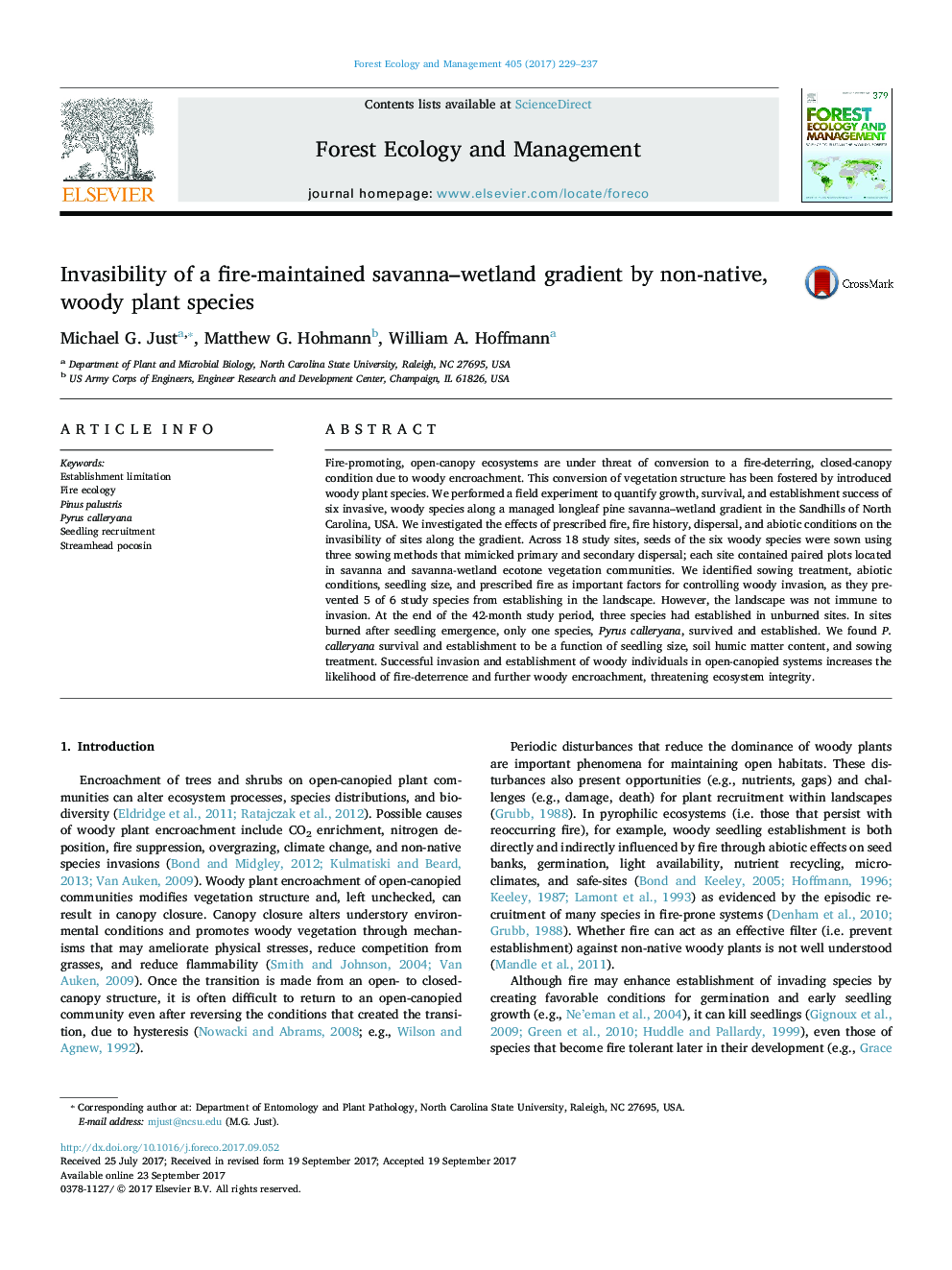| کد مقاله | کد نشریه | سال انتشار | مقاله انگلیسی | نسخه تمام متن |
|---|---|---|---|---|
| 6459079 | 1421353 | 2017 | 9 صفحه PDF | دانلود رایگان |
- Three of six non-native woody species established in sites without fire.
- Mode of seed dispersal was an important determinant of establishment.
- Only Pyrus calleryana seedlings resprouted and established after fire.
- P. calleryana survival was a function of seedling size and soil humic matter.
Fire-promoting, open-canopy ecosystems are under threat of conversion to a fire-deterring, closed-canopy condition due to woody encroachment. This conversion of vegetation structure has been fostered by introduced woody plant species. We performed a field experiment to quantify growth, survival, and establishment success of six invasive, woody species along a managed longleaf pine savanna-wetland gradient in the Sandhills of North Carolina, USA. We investigated the effects of prescribed fire, fire history, dispersal, and abiotic conditions on the invasibility of sites along the gradient. Across 18 study sites, seeds of the six woody species were sown using three sowing methods that mimicked primary and secondary dispersal; each site contained paired plots located in savanna and savanna-wetland ecotone vegetation communities. We identified sowing treatment, abiotic conditions, seedling size, and prescribed fire as important factors for controlling woody invasion, as they prevented 5 of 6 study species from establishing in the landscape. However, the landscape was not immune to invasion. At the end of the 42-month study period, three species had established in unburned sites. In sites burned after seedling emergence, only one species, Pyrus calleryana, survived and established. We found P. calleryana survival and establishment to be a function of seedling size, soil humic matter content, and sowing treatment. Successful invasion and establishment of woody individuals in open-canopied systems increases the likelihood of fire-deterrence and further woody encroachment, threatening ecosystem integrity.
Journal: Forest Ecology and Management - Volume 405, 1 December 2017, Pages 229-237
